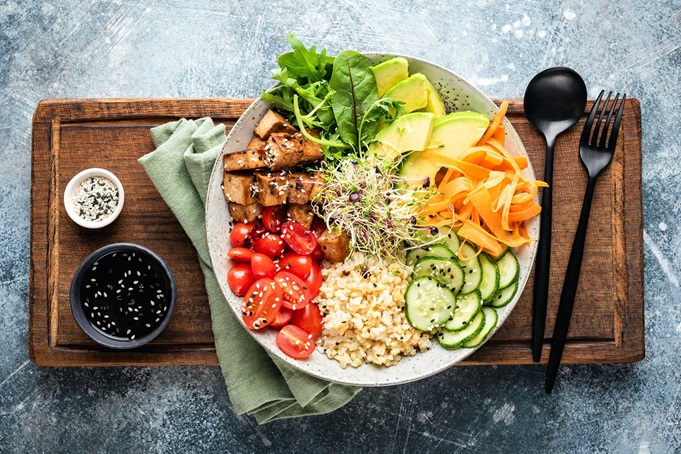The page is being turned on a bizarre and difficult year. Here’s what’s on the industry horizon.
In past years, trend forecasts would be full of new flavors and ingredients that chefs are playing with and that are gaining traction among diners. Like so much else these days, this year is a little different.
Apart from mild reports about pumpkin or walnut oil adding flavors and depth to dishes, trends for 2021 revolve around survival and finding solutions for restaurants. It’s challenging out there but with a little creative thinking and flexibility, restaurants can find ways to enhance profits.
Food Halls
Ghost kitchens have been popping up for more than a year now as a way to increase revenue streams and make use of underutilized kitchen space or off-hours capacity. Now, with so many dining rooms sitting idle, people are literally ripping out their tables. Food stalls are now popping up in the empty dining room spaces where different chefs can offer their food to-go or for delivery. Spreading the financial risk and adding a revenue stream or two can go a long way towards keeping your business afloat.
Delivery Windows
Even if you’re lucky enough to have indoor dining, a not insubstantial part of your orders is likely still delivery. Social distancing or not, the last thing you want is for delivery drivers to be massed around your host stand and blocking access to dine-in customers. A window, along with a designated parking spot or two if you’ve got them, can move all of this out of the way of your diners, creating a better space for your staff and the delivery drivers to interact. That diners have become much more accepting of delivery, even expecting it, means windows are likely to long outlive our current reality.
Restaurant Bonds
People are anxious to help their favorite restaurants survive, and many point to gift card as a great way to help keep the lights on and the rent paid. Of course, if they turn around and use the gift card immediately there isn’t a whole lot of benefit to you. Encourage people to hang onto those investments in your future by offering a bond instead — the longer they keep it, the more it’s worth. For example, using monthly or six-month increments, add a percentage or fixed value to the card to incentivize consumers to keep them until better times are here. Capping the premium after a year might help avoid a surprise a few years down the road.
Bowls
The traditional entrée, a main and two sides, can be a little awkward in the current climate with so much being eaten on-the-go or through delivery. Dishes designed for a certain wow factor on a plate don’t always deliver the same punch when served in a clam shell to-go container — especially when things don’t exactly fit aesthetically into the separate areas or they slide around in transit. Redesigning dishes with distinct layers and foods pre-cut into bite-size pieces can help your dishes regain their visual appeal and make them more practical for eating off-premises.
Meal Kits
With people avoiding dining rooms and crowded grocery stores, the meal prep business is exploding. Jump on this bandwagon by creating simple, easy-to-make kits based on popular items from your menu. A few ingredients, perhaps a sauce, and clear instructions are all you need. Task your prep crew with creating these kits, which can also help bring back staff or add hours outside normal dining times.
Plant-Based
This is not really a trend but an emerging juggernaut. If you don’t have at least one dish using “beyond meat” or a similar plant-based substitute, you should, at the very least, start familiarizing yourself with these products. Its ubiquity is mainly a function of limited supply, but that’s changing. Between the increasing number of vegans/vegetarians and health-conscious diners, many look to plant-based as a way to enjoy many dishes they’ve been missing out on. It’s also likely that more than just those groups will be turning to plant-based meat in the future, with rising costs for beef and chicken. As production ramps up and prices drop, these might be the affordable products for thrifty diners and restaurants looking to control costs.
As we move into the future, some are saying the restaurant model will have to change, regardless of COVID. That may be true, but if you look around, there are more than a few hardy souls making the adjustments and re-inventing themselves for 2021.



